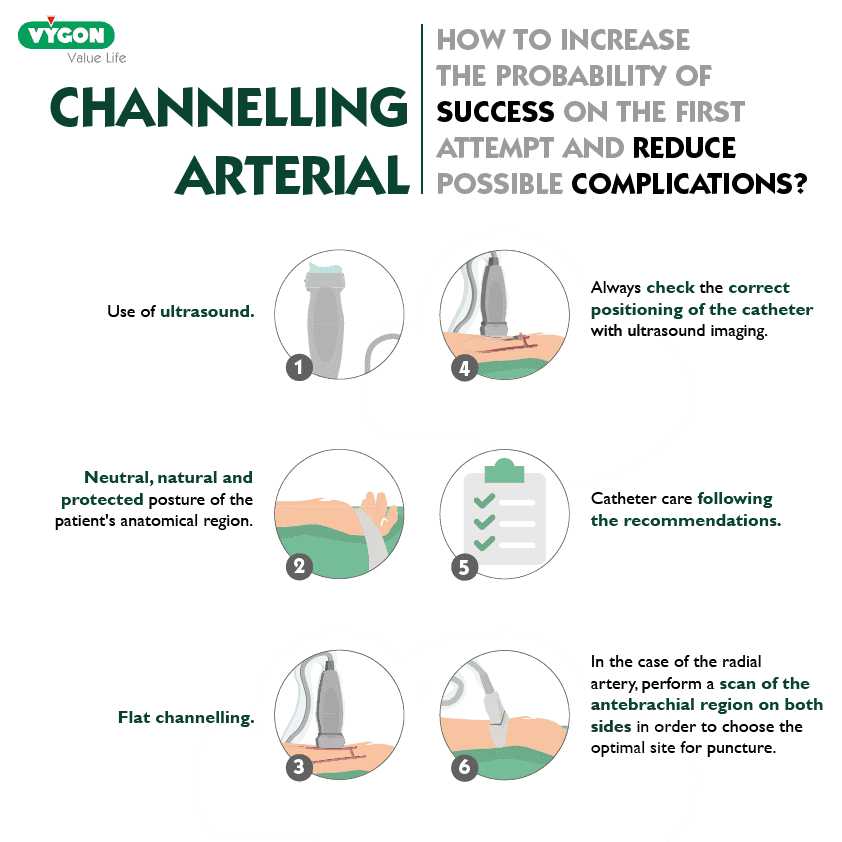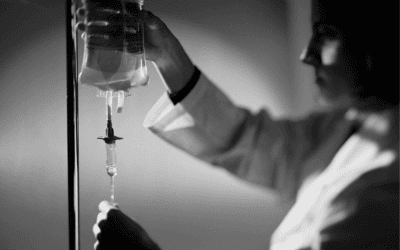Arterial cannulation for continuous blood pressure monitoring is not a technique free from complications; most of the time, these are minor and do not pose a major problem for the patient, but in some cases, they can have serious consequences. Furthermore, in children, given the smaller calibre of the arteries and the greater difficulty of cannulation, the incidence of these complications is higher. For this reason, there is currently a greater tendency to use ultrasound to perform the technique in an echo-guided manner, thereby reducing the incidence of these complications.
The Main Risks That May Be Encountered During Arterial Cannulation Are:
Haematoma
The risk of haematoma increases with the number of failed punctures. The use of ultrasound could help to reduce the incidence of haematoma.
Infections
The risk of infection increases in a time-dependent manner (10% if kept longer than 7 days). It is therefore recommended to change them periodically.
Thrombosis and/or Obstruction
Catheter obstruction in pediatric patients is very common due to their small calibre. Periodic flushing with 2-3 ml of saline solution can be performed, always in a gentle manner, to reduce the risk of embolism. Thrombosis is especially common in umbilical artery catheters, so given the high risk of thrombosis and infection, we try to maintain them for a maximum of 48 hours.
We should remember that umbilical artery thrombosis can lead to necrotising enterocolitis, lower limb ischemia and renovascular thrombosis.
Embolism
The embolism can become retrograde due to excessively vigorous and sustained lavage.
Distal Ischemia
The severity of distal ischemia can vary from mild ischemia recoverable in a few days to complete ischemia requiring amputation, depending on the time of evolution and the distal flow preserved in the limb.
We can reduce the risk of ischemia by performing the Allen test prior to cannulating the radial artery to check the patency of the collateral circulation (ulnar). Furthermore, in pediatric patients, it is important to select the correct calibre of the catheter to be used. If it is too large and does not allow sufficient blood to pass distally, the limb in question will develop ischemia if there is no collateral circulation.
Injury to Adjacent Nerve Structures
The use of ultrasound will allow us to identify adjacent nerve structures, significantly reducing this risk.
Iatrogenic Arteriovenous Fistula
An iatrogenic arteriovenous fistula occurs when communication exists between an artery and a vein, resulting in continuous blood flow. Symptoms include constant pain at the puncture site, oedema, paresthesia, increased limb volume and tremor on palpation of the pulse.
Poor Signal Waveform and Difficulty in Implementing Advanced Monitoring
Another complication is the lack of an optimal blood pressure waveform signal, as well as the difficulty in implementing advanced monitoring systems. Apart from being a classic complication, the study of the arterial pressure waveform has become a complication of recently added value and is very limiting.
Recommendations

There are a number of actions that can be taken to increase the probability of success on the first attempt and thus reduce the potential risks:
- Use of ultrasound. This is the main recommendation, as it has been shown, both by meta-analysis and clinical practice, that the use of ultrasound for cannulation of peripheral arterial accesses decreases the complication rate.
- Neutral, natural and protected posture of the patient’s anatomical region.
- Flat channelling. Although it is technically more complex, it is always more reliable than cannulation out of plane, as the needle entry into the artery is better observed, as well as being able to observe if any complications arise, such as the appearance of a hematoma or dissection of the arterial wall when passing the guidewire.
- Always check the correct catheter placement by ultrasound imaging, blood gas sampling, and blood pressure waveform recording.
- Catheter care following the recommendations specified in the Bacteremia Zero© protocol.
- In the case of the radial artery, perform a scan of the antebrachial region on both sides in order to choose the optimal site for puncture.
These recommendations, based on advice from Dr Escriba, an anaesthetist in Spain, will help reduce the number of attempts during arterial cannulation and decrease the incidence of the complications described above.



